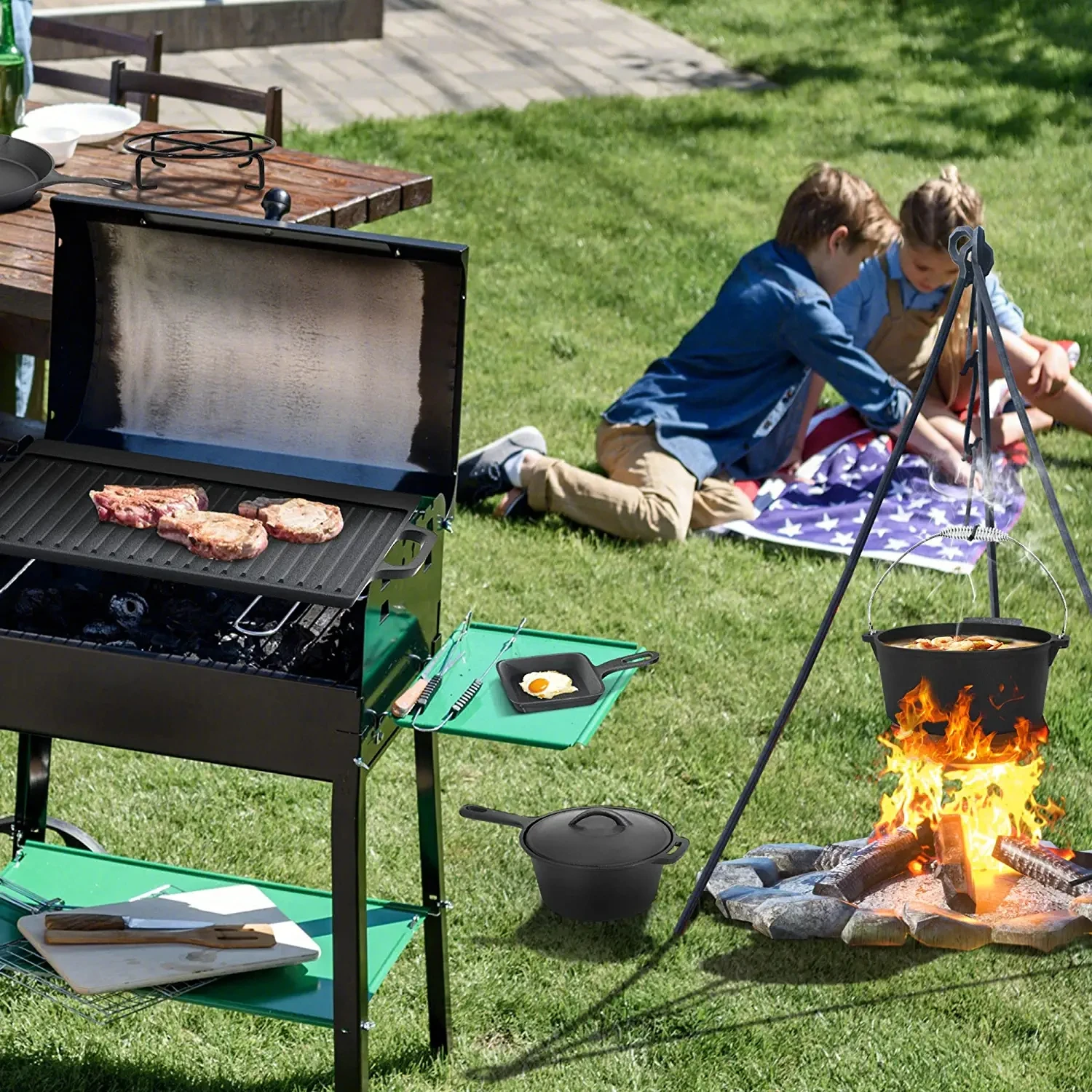
Benefits of Using a Cast Iron Dosa Pan for Perfectly Cooked Indian Crepes
The Versatility and Charm of Cast Iron Dosa Pans
Cast iron cookware has long been celebrated for its durability, heat retention, and the unique flavor it imparts to food. Among the myriad of cast iron products, the cast iron dosa pan stands out as a beloved kitchen essential, especially in South Asian cuisine. This article explores the captivating features of cast iron dosa pans, their uses, care tips, and the reasons why they have remained popular through generations.
What is a Dosa?
Before delving deeper into the pan itself, it is essential to understand what a dosa is. Dosa is a traditional South Indian crepe made from fermented rice and lentil batter. It is a staple breakfast item, often served with tangy sambar (a lentil-based vegetable stew) and spicy chutneys. The perfect dosa has a crispy exterior while remaining soft and airy on the inside, a feat easily achieved with a high-quality cooking surface like cast iron.
Features of Cast Iron Dosa Pans
Cast iron dosa pans have a unique structure that enhances their functionality. They are typically flat and slightly thick, allowing for even heat distribution. This characteristic is crucial for cooking dosas, as hotspots can lead to uneven cooking, causing one part of the dosa to burn while another remains undercooked.
The seasoned surface of a cast iron dosa pan also contributes to its excellent non-stick properties. When properly seasoned, cast iron becomes naturally non-stick, which is vital when spreading the dosa batter. This quality not only makes dosas easier to flip but also ensures minimal sticking and burning, allowing cooks to achieve that desired golden-brown color.
Why Choose Cast Iron?
1. Durability With proper care, a cast iron dosa pan can last for generations. Unlike non-stick alternatives that may wear out over time, cast iron can withstand high heat and is resistant to scratching.
2. Healthy Cooking Cooking with cast iron can fortify your food with iron, an essential mineral for the body. This is particularly beneficial for individuals who may require additional iron in their diets.
cast iron dosa pan

3. Versatility Besides dosas, these pans can be used for a variety of cooking methods, including sautéing, baking, grilling, and frying. This versatility makes them a valuable addition to any kitchen, especially for those who love experimenting with different cuisines.
4. Flavor Enhancement Many chefs agree that cast iron adds a depth of flavor to food, thanks to its ability to retain heat and develop a seasoned surface over time. This is particularly true for dishes that require searing, where the cast iron can create a beautiful crust.
Caring for Your Cast Iron Dosa Pan
Caring for a cast iron dosa pan is straightforward but requires some attention. Here are essential tips to ensure your pan lasts a lifetime
- Seasoning Regularly season your pan to maintain its non-stick surface. After cleaning, apply a thin layer of vegetable oil and place it on low heat for a while to let the oil absorb.
- Cleaning Avoid using soap, as it can strip the seasoning. Instead, scrub the pan with a stiff brush and hot water. If food is particularly stuck, consider soaking it briefly.
- Drying Always dry your pan immediately after washing to prevent rust. You can place it on the stove on low heat to ensure all moisture evaporates.
Conclusion
A cast iron dosa pan is more than just a kitchen tool; it is a gateway to an array of culinary delights. Its unique properties make it ideal for preparing not only dosas but countless other dishes as well. With proper care, a cast iron dosa pan can indeed become a cherished heirloom, bringing family and friends together around the table for generations to come. Whether you are a novice or an experienced cook, adding a cast iron dosa pan to your kitchen arsenal is a choice you will not regret.
-
Season Cast Iron Perfectly with GPT-4 Turbo TipsNewsAug.01,2025
-
High Quality Cast Iron Cookware - Baixiang County Zhongda MachineryNewsAug.01,2025
-
Premium Cast Iron Pan: Durable & Perfect HeatNewsAug.01,2025
-
High Quality Kitchen Durable Black Round Cast Iron Cookware Pancake Crepe Pan-Baixiang County Zhongda Machinery Manufacturing Co., Ltd.NewsAug.01,2025
-
Cast Iron Cookware - Baixiang County Zhongda Machinery | Nonstick, Heat ResistanceNewsAug.01,2025
-
High Quality Kitchen Durable Black Round Cast Iron Cookware - Baixiang County Zhongda Machinery | Non-Stick, Heat Retention, DurableNewsJul.31,2025


